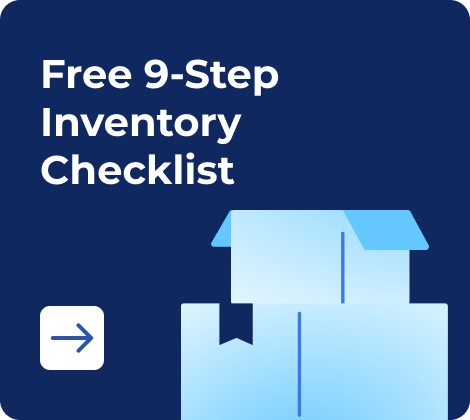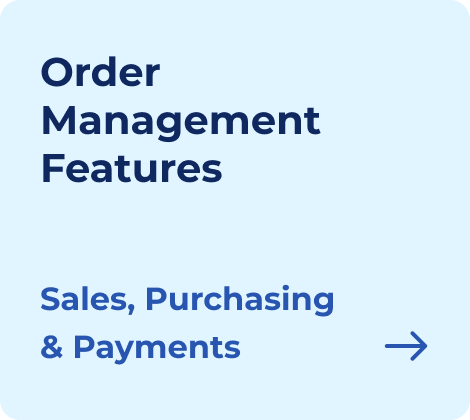Yuri Malakhov, co-founder of Elektronky, told Kladana how to build a successful business without initial capital or investments, to launch sales on social media, and to make typical mistakes of a beginner.
The rise of the Elektronky turned out to be lightning-fast, even for the founders themselves. At first, it was just an idea to try selling portable gadgets. However, in a year Yuri Malakhov and Alexander Goltsev managed to become serious players in the electronics market in St. Petersburg and then in Russia. They opened two retail stores and created the largest community on Telegram.

Initial Capital — $480
I was not engaged in business, but I was interested in sales, read relevant books, and listened to lectures. So I decided to put the theory into practice. I began to study the market for portable gadgets, paying primary attention to pricing. It turned out that the purchase price of these devices was low, and the demand for them was seriously growing, especially among young people. The markup was 100% and sometimes 200%.
All in all, I realized that earbuds were a hype commodity in contrast to some spinners that blow up the market and then disappear without a trace. The demand for portable gadgets would only grow, and the profitability would rise.
My apartment is located in a densely populated area of St. Petersburg with many retail outlets and local stores. Some of these stores sell headphones, cables, charging stations, and accessories. Sellers eagerly shared from whom and at what price they purchased goods, and how many items they sold per day.
I took my savings — $480 — and went to a market. I found people who sold portable gadgets. I called the outlets and offered them to purchase goods with delivery to the store. I sold them for $700. The next day I delivered products to 5 stores, and a week later — to 10 ones.
Handy Tip
If you have a similar business to Yuri, and you need to sell goods to numerous wholesale customers, you can use Online Order App in Kladana.
It helps to launch online sales without a website. Create one public catalogue link instead of price lists, or a bunch of individual catalogue links for each of your sales agents and get sales orders automatically.
So the turnover and the number of stores grew exponentially. At the same time, I managed to come to an agreement with the suppliers to take the goods on sale, which meant that we paid for them after they had been sold.

Sales through communication and analytics
Sales are not always about price. Outbidding is the easiest and most unreliable strategy because there is always someone who is cheaper. Communication is extremely important. You have to be comfortable to work with and show that you won’t let the salesmen down.
In my case, it worked out that I lived near the outlets, and I could deliver the goods every day. It is important to make exclusive offers, to understand your customer’s business, and to offer them something that will bring them good sales.
Now through Kladana, we do analytics on each client and see what products are the most profitable. Sometimes a seller wants to buy a product, but according to our data, they won’t get great sales. So, we discourage them and advise them to pay attention to other goods. Or, for example, we keep track of new products and offer our clients to try them. Now those who are just about to open their first portable gadget shop come to us and ask us to pick up a showcase for them.
Social Media as a Sales Channel
My partner and I decided that the main sales channel would be social media. We considered Instagram, VKontakte (popular Russian social media), and Telegram. The first two channels are created for monetization, every action there has to be paid for, and it’s not so easy to find your client. On the other hand, the audience in Telegram is more lively, more active, it has already been collected and segmented. So, we chose Telegram. We were the first to use Telegram with this product. It gave us huge possibilities for advertising, promotion, and brand building.
There is a global search engine on Telegram, but many people do not know how to use it. In fact, Telegram brings together fans of dogs, cats, anime, dancing, and fishing, there are a lot of ready-made communities. Different tools allow you to invite this audience into your chat room or group. There are invites, newsletters, and advertising.
You need to understand who your client is, where to find them, and what their needs are. Gathering an audience is easy — it’s hard to make it a part of your community. Of course, we were not trusted, the natural reaction when you are added to a chat room is mistrust. And that’s where you have to learn how to deal with objections. We didn’t delete any comment unless it contradicted the laws of the Russian Federation or moral and ethical standards. All feedback was answered and everything was sorted out. If we made a mistake, we always honestly admitted it. Dissatisfaction enabled us to improve our work. You cannot sell on Telegram if you do not build communication with your audience.
Now we have two channels and two chats under different brands. They differ in the way they present information: one has more entertaining content, and surveys, while the other is more informational. It’s important that you don’t annoy the audience, and that you don’t overdo it.
Our channels and chats are run by different managers, they create various content, and people choose where they feel most comfortable, often without realizing that both channels are ours. Several resources allow us to get more positions in the search engine. Now our community is about 70,000 people, they are mostly store owners and purchasing managers.

We Shut Down One of our Retail Stores
We had two retail stores, and now there’s only one left. We opened the first outlet after six months of wholesale sales, as the profit increased. To open a shop is not a cheap thing to do: on average, you need $11,500 for St. Petersburg. Retail stores require constant monitoring: the seller didn’t come to work, the Internet connection is lost, the lights went out, we ran out of products, and so on.
Sales on Telegram, as well as the opening of two retail outlets, brought Elektronky to a monthly turnover of $183,000. Profitability is 15–20%, and that’s taking into account the high salaries of managers — an average of $2,300.
To open an outlet, there are many nuances to consider. The location must be a densely populated residential area. You need to pay attention to the number of houses, and discover who lives in those houses, people of what age. If they are young, if there is a college, an institute, a coffee shop, or a club nearby, then you should open a retail gadget shop. If the area is suitable, you’d better talk to sellers and buyers, and ask questions.
When opening a shop, you shouldn’t forget about social media, you have to communicate with customers and tell them about promotions and new products. And, of course, you can’t do without a reliable supplier with a good price and adequate quality.
With our first outlet, we didn’t take the competition factor into account. When we opened the store, there were five stores next to us, and now there are 20. It was easier for us to close it than to shake it up. Our second store generates a monthly turnover of between $9,000 and $11,500.
When opening a retail store, you have to understand that if there are no investments and no elaborated development plan, you should not expect impressive profits. Development and growth will be slow, and you need to work as a salesperson yourself, to know the inner workings.
Even if the goods are sold with a markup of 100–200%, this will not bring huge profits, cause there are too many expenses. The net profit is $60–120 a day.
My Epic Business Failure and Millions Wasted
When a business shoots up abruptly, as ta was in our case, then an unhealthy excitement appears. It seems that if you succeeded once, now you would boost any other project. I decided to make money on scarcity. My major failure was buying a large batch of pads for women in the spring of 2022. I ordered 7 thousand pieces from China at a time when the dollar was rising when there was a huge shortage of pads, and I planned to sell them on online marketplaces.
In the end, the rouble strengthened, and there was no longer a scarcity of pads. So, they are still in the warehouse, and several million roubles are simply thrown away. I had not thought through and calculated all the risks. I had some free money, decided to invest, and lost.
Analytics and creativity are the two pillars of successful entrepreneurship. Professionalism and «making a lot of money» are not synonymous.
At the initial stage, you do not know the niche well, you do not know how the business works, and you do not consider the pitfalls. You have to hone in on what you’re doing. If the project succeeds, my advice is to go deeper, study it thoroughly, and not look for somewhere else to invest money.
If it does not work, there is no money or investment, then it is better to give up, not to flog a dead horse. And if it gets off the ground, then work until the business can exist without your personal involvement. You have to make mistakes, but you have to be able to solve them quickly.
Scaling Business through Sales and Analytics
First of all, it is necessary for us to build up a sales system — to try new channels. Previously we only sold on Telegram and in retail shops, but now we have hired managers who work with chain stores. They require a specific kind of communication, it takes a long time to work with them. We have regional managers, and each of them is responsible for a particular region.
Secondly, analytics with which Kladana helps us. We evaluate the entire range of products, and each item, and analyze retail sales and our customers. Analytics allows us to work systematically. You need to understand why goods are sold like hot cakes and why they are not. If sales leave much to be desired, it’s important to scrutinize the reasons. Maybe the prices are too high, or the product range is not enough to meet the needs of different customers.
A lot depends on the location. For example, if the main customers of a store are women, you should adapt your product range to their liking. We consider each client individually, there is no template work.
A manager does not try to sell goods at any cost. Automation helps to sell wisely. All orders, sales, profits and expenses are visible, and the history is saved in Kladana. It is also convenient for us to see who and how many of the managers have sold goods, the entire system is completely transparent and excludes any fraud.
Would you like to get similar results?
Thirdly, consumer demand is constantly changing. Today there are more than 3,000 items in the product range, and we started with three. You constantly have to have your finger on the pulse in order to be aware of new products and customers’ preferences. We always work with the product range, take part in exhibitions and specialized events, and visit factories. Suppliers, seeing our activity, often find us on their own.



